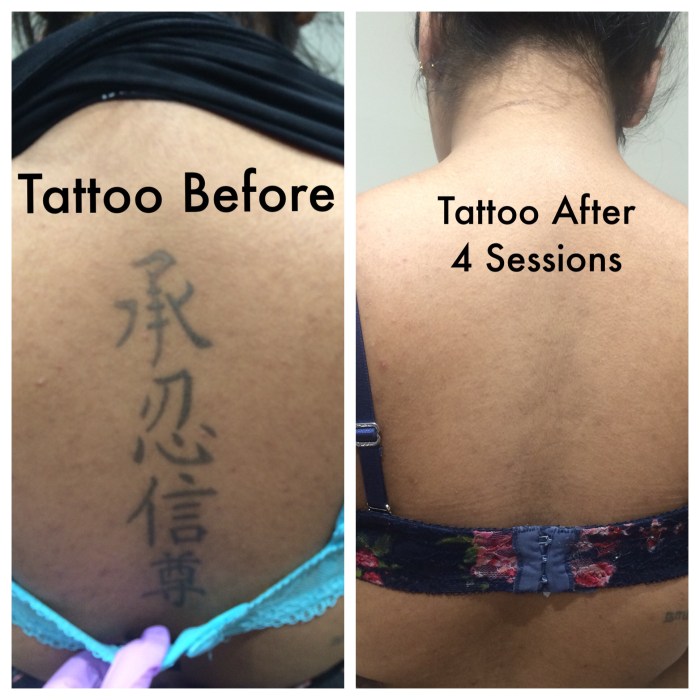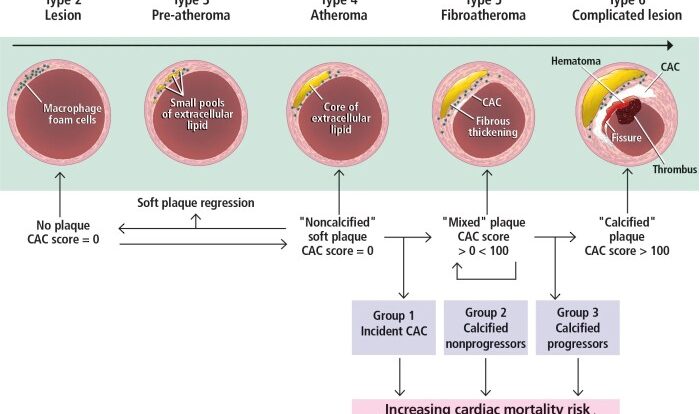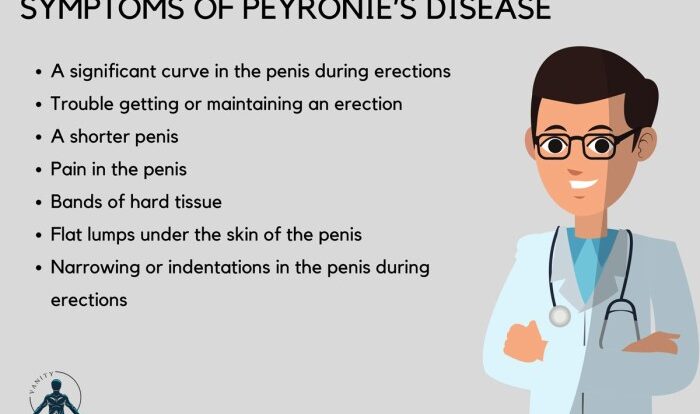Can you do laser hair removal over a tattoo? The answer is yes, but there are some important things to consider. Laser hair removal works by targeting the pigment in hair follicles. However, tattoo ink is also a type of pigment, so there is a risk of damaging the tattoo if the laser settings are not correct.
In this comprehensive guide, we will discuss the impact of laser hair removal on tattoo ink, skin pigmentation, and sensitivity. We will also provide tips on how to choose the right laser wavelength, treatment parameters, and cooling methods to minimize the risk of tattoo damage.
Impact on Tattoo Ink

Laser hair removal can potentially affect tattoo ink, depending on the wavelength of the laser used and the colors present in the tattoo.
The most common type of laser used for hair removal is the Nd:YAG laser, which emits a wavelength of 1064 nm. This wavelength is absorbed by the melanin in hair follicles, which causes them to heat up and be destroyed.
However, the Nd:YAG laser can also interact with tattoo ink, particularly if the ink contains iron oxide or other metals.
Risks of Fading or Discoloration
The interaction between the laser and tattoo ink can cause the ink to fade or discolor. This is more likely to occur with darker colors, such as black, blue, and green. Lighter colors, such as yellow and orange, are less likely to be affected.
The amount of fading or discoloration will vary depending on the individual tattoo and the laser settings used. In some cases, the tattoo may only fade slightly, while in other cases it may be completely removed.
Examples of Tattoo Ink Colors
- Black:Black tattoo ink is typically made with carbon or iron oxide. The Nd:YAG laser can interact with both of these substances, causing the ink to fade or discolor.
- Blue:Blue tattoo ink is typically made with cobalt or copper salts. The Nd:YAG laser can interact with these salts, causing the ink to fade or turn green.
- Green:Green tattoo ink is typically made with chromium or iron oxide. The Nd:YAG laser can interact with both of these substances, causing the ink to fade or turn brown.
- Yellow:Yellow tattoo ink is typically made with cadmium or zinc salts. The Nd:YAG laser is less likely to interact with these salts, so yellow tattoo ink is less likely to fade or discolor.
- Orange:Orange tattoo ink is typically made with cadmium or iron oxide. The Nd:YAG laser is less likely to interact with these salts, so orange tattoo ink is less likely to fade or discolor.
Skin Pigmentation and Sensitivity
Skin pigmentation and sensitivity are crucial factors to consider during laser hair removal. They can influence the effectiveness of the treatment and the potential for side effects.
Skin Pigmentation
Skin pigmentation refers to the amount of melanin in the skin. Melanin is a pigment that gives skin its color and also absorbs laser energy. Laser hair removal targets the melanin in hair follicles to destroy them. However, if the skin contains too much melanin, it can absorb too much laser energy and lead to skin damage, such as hyperpigmentation or hypopigmentation.
If you’re thinking about getting laser hair removal, you might be wondering if it’s safe to do over a tattoo. The answer is yes, but it’s important to find a qualified technician who has experience with treating tattooed skin. Laser hair removal works by targeting the pigment in hair follicles, and it can be effective on both light and dark hair.
However, if you have a tattoo, the laser may also target the pigment in the ink, which could cause the tattoo to fade or change color. That’s why it’s important to find a technician who is experienced with treating tattooed skin and who can adjust the laser settings accordingly.
If you’re not sure whether laser hair removal is right for you, you can always consult with a dermatologist. They can help you assess your skin and determine if laser hair removal is a good option for you. And if you’re wondering whether you should go to urgent care for flu symptoms, here’s a helpful article that can guide you.
Skin Sensitivity
Skin sensitivity is another important consideration. Some people have more sensitive skin than others, which can make them more prone to side effects from laser hair removal, such as redness, swelling, or blistering. Skin sensitivity can also affect the efficacy of the treatment, as it may limit the laser settings that can be used without causing discomfort.
Laser Wavelength Selection
Selecting the appropriate laser wavelength is crucial to minimize tattoo ink damage during hair removal. Different wavelengths penetrate the skin at varying depths, targeting specific chromophores (light-absorbing molecules) in the hair and ink.
Wavelength Selection for Tattoo Preservation
To preserve tattoo ink, it’s essential to choose a wavelength that is absorbed by hair melanin but not by tattoo ink pigments. Common laser wavelengths used in hair removal include:
- Alexandrite Laser (755 nm):Absorbed well by dark hair, but has limited absorption by tattoo ink pigments.
- Diode Laser (808-810 nm):Less absorbed by tattoo ink than Alexandrite laser, making it suitable for darker skin tones.
- Nd:YAG Laser (1064 nm):Targets deeper hair follicles and has the least absorption by tattoo ink pigments, minimizing ink damage.
The optimal wavelength choice depends on individual factors such as hair color, skin tone, and tattoo ink color. Consultation with a qualified laser technician is recommended to determine the most appropriate wavelength for preserving tattoo ink.
Treatment Parameters
Selecting the appropriate treatment parameters is crucial to minimize the risk to tattoo ink while effectively removing unwanted hair. These parameters include fluence, pulse duration, and spot size.
Fluence
Fluence, measured in joules per square centimeter (J/cm 2), represents the amount of laser energy delivered to the skin. Higher fluence settings increase the risk of damaging tattoo ink, as the laser energy can penetrate deeper into the skin. To preserve the tattoo ink, lower fluence settings should be used.
Pulse Duration
Pulse duration, measured in milliseconds (ms), refers to the length of time the laser energy is applied to the skin. Longer pulse durations allow more time for the laser energy to disperse, reducing the risk of thermal damage to the tattoo ink.
Therefore, longer pulse durations are preferred.
Spot Size
Spot size, measured in millimeters (mm), determines the area of skin treated with each laser pulse. Smaller spot sizes increase the precision of hair removal, but they also increase the risk of damaging tattoo ink. Larger spot sizes are recommended to minimize the risk to the tattoo ink.
By carefully adjusting these treatment parameters, laser hair removal can be performed effectively while preserving the integrity of the tattoo ink.
Cooling Methods
Cooling devices play a crucial role in laser hair removal over tattoos by minimizing thermal damage to the ink and surrounding skin.
Different cooling methods vary in effectiveness:
- Contact coolinginvolves applying a cold compress or cooling gel directly to the skin before and during treatment. It provides immediate cooling but may not be as effective for deeper tissues.
- Air coolinguses a stream of cold air directed at the treatment area. It is less effective than contact cooling but offers more comfort and convenience.
- Cryogen sprayutilizes a liquid nitrogen spray to rapidly cool the skin. It provides the most effective cooling but requires specialized equipment and can be uncomfortable.
To minimize tattoo ink damage, it is recommended to use a combination of cooling methods. Contact cooling with a cooling gel can be applied before and during treatment, followed by air cooling to maintain skin temperature. Cryogen spray may be used in specific areas where deeper cooling is required.
Pre-Treatment Considerations

Prior to laser hair removal over a tattoo, a thorough evaluation of the tattoo is crucial to ensure safe and effective treatment. This involves assessing the tattoo’s age, ink colors, and depth to determine the potential impact of laser energy on the ink and surrounding skin.
Informed consent and patient education are essential to ensure that the patient understands the potential risks and benefits of the procedure. They should be made aware of the possibility of tattoo ink discoloration, fading, or other alterations, as well as any potential skin reactions or side effects.
Patch Testing
Patch testing is an important step in assessing the stability of tattoo ink under laser irradiation. A small area of the tattoo is exposed to laser energy at varying intensities to determine the ink’s response and the skin’s tolerance to the treatment.
The results of the patch test help guide the selection of laser parameters and treatment settings to minimize the risk of adverse effects.
It’s crucial to consider the safety of laser hair removal over tattoos, as the laser’s energy can interact with the tattoo ink. Similarly, when seeking relief from a cough while breastfeeding, it’s essential to choose medications compatible with breastfeeding, such as those discussed in this article . Returning to laser hair removal, it’s advisable to consult a healthcare professional for personalized guidance regarding the potential risks and benefits of laser treatment over tattooed areas.
Post-Treatment Care
Following laser hair removal over a tattoo, proper care is crucial to minimize tattoo ink damage and ensure optimal results.
Can you do laser hair removal over a tattoo? It’s a question that comes up a lot, and the answer is usually yes. However, there are some things to keep in mind. First, the laser can cause the ink in the tattoo to fade.
Second, the treatment may be more painful over the tattooed area. Third, there is a small risk of scarring. If you’re considering laser hair removal over a tattoo, be sure to talk to your doctor first. Blood in urine after radiation therapy for prostate cancer is a common side effect.
It’s usually not serious, but it’s important to see your doctor if you experience it. Laser hair removal can be a great way to get rid of unwanted hair, but it’s important to be aware of the risks before you start treatment.
Sun Protection
Exposure to ultraviolet (UV) radiation from the sun can damage tattoo ink, causing fading and discoloration. Therefore, it is essential to protect the treated area from the sun for at least two weeks after treatment. Use sunscreen with an SPF of 30 or higher and wear protective clothing when outdoors.
Moisturizing
Keeping the treated skin moisturized helps prevent dryness and itching, which can irritate the tattoo and lead to ink damage. Apply a fragrance-free, hypoallergenic moisturizer several times a day.
Tattoo Ink Fading
Laser hair removal may cause some tattoo ink fading, especially in cases where the ink is close to the surface of the skin. The extent of fading depends on factors such as the laser settings, the tattoo’s age, and the individual’s skin type.
To minimize fading, follow the recommended post-treatment care instructions and avoid sun exposure. If significant fading occurs, touch-ups may be necessary to restore the tattoo’s appearance.
Alternative Hair Removal Methods
In cases where laser hair removal is not suitable for tattooed areas, alternative hair removal methods may be considered. These methods offer varying degrees of effectiveness, permanence, and side effects.
The most appropriate alternative method depends on individual factors such as skin type, hair color and thickness, and desired level of hair removal.
Electrolysis
- Permanent hair removal method involving the insertion of a fine needle into each hair follicle.
- Electrical current is applied to destroy the hair follicle, preventing future hair growth.
- Time-consuming and can be painful, especially on sensitive areas.
Threading
- Temporary hair removal method using a thin thread to twist and pluck hairs.
- Precise and can remove even fine hairs.
- Can cause skin irritation and redness.
Sugaring
- Temporary hair removal method using a paste made from sugar, lemon juice, and water.
- The paste is applied to the skin and then removed, taking the hairs with it.
- Less painful than waxing and can be used on sensitive skin.
Tweezing, Can you do laser hair removal over a tattoo
- Temporary hair removal method involving the use of tweezers to pluck hairs.
- Precise but time-consuming and can cause skin irritation.
- Suitable for small areas or individual hairs.
Depilatory Creams
- Temporary hair removal method using chemical creams that dissolve the hair shaft.
- Quick and easy to use.
- Can cause skin irritation and are not suitable for sensitive skin.
Client Selection
In laser hair removal over tattoos, client selection is paramount to ensure optimal outcomes and minimize potential risks. Assessing the suitability of a client for treatment requires careful consideration of several factors.
Factors to consider include skin type, tattoo characteristics, and individual expectations. Skin type determines the laser wavelength and settings appropriate for the procedure. Tattoo characteristics, such as color, depth, and age, influence the potential impact of laser treatment on the ink and the surrounding skin.
Realistic patient counseling is crucial to manage expectations and inform clients about the limitations of laser hair removal over tattoos.
Patient Counseling
During patient counseling, it is essential to:
- Explain the potential risks and benefits of laser hair removal over tattoos.
- Discuss the limitations of the procedure, including the possibility of incomplete hair removal and changes in tattoo appearance.
- Obtain a thorough medical history to identify any contraindications or underlying conditions that may affect treatment.
- Provide clear instructions on pre- and post-treatment care to ensure optimal results and minimize complications.
Professional Training and Expertise

Laser hair removal over tattoos requires specialized knowledge and skills to ensure optimal results while preserving the tattoo’s integrity. Improper technique can lead to adverse effects on both the tattoo and the surrounding skin.
Risks associated with inexperienced practitioners include:
- Damage to the tattoo, resulting in fading or distortion
- Burns or scarring of the skin
- Ineffective hair removal
Finding Qualified Professionals
To minimize risks, it’s crucial to seek treatment from a qualified and experienced practitioner. Look for professionals who:
- Are certified by a reputable laser hair removal organization
- Have a proven track record of successful tattoo laser hair removal
- Use advanced laser technology and adhere to industry best practices
Case Studies and Patient Outcomes: Can You Do Laser Hair Removal Over A Tattoo
Real-world experiences and case studies offer valuable insights into the effectiveness of laser hair removal over tattoos.
Challenges and Outcomes
Challenges may include:
- Tattoo ink absorbing laser energy, leading to skin damage
- Differences in tattoo ink colors and depths
- Skin sensitivity and potential for scarring
Despite these challenges, successful outcomes are possible with careful planning and execution:
- Selecting appropriate laser wavelengths that minimize tattoo ink absorption
- Using low energy settings and multiple treatment sessions
- Cooling the skin to prevent damage
Before-and-After Examples
Numerous before-and-after photos and videos showcase the effectiveness of laser hair removal over tattoos:
- Dark hair over a black tattoo successfully removed with minimal impact on ink
- Light hair over a colored tattoo effectively reduced without fading the colors
- Multiple treatment sessions resulted in significant hair reduction over a large tattooed area
Epilogue
Laser hair removal can be a safe and effective way to remove unwanted hair from areas with tattoos. However, it is important to choose a qualified practitioner who has experience in treating tattooed skin. By following the tips in this guide, you can minimize the risk of tattoo damage and achieve the best possible results.
Commonly Asked Questions
What are the risks of laser hair removal over a tattoo?
The main risk of laser hair removal over a tattoo is damage to the tattoo ink. This can cause the tattoo to fade or discolor.
How can I minimize the risk of tattoo damage?
There are a few things you can do to minimize the risk of tattoo damage, including choosing a qualified practitioner, using the correct laser settings, and following the post-treatment care instructions.
What should I do if my tattoo is damaged after laser hair removal?
If your tattoo is damaged after laser hair removal, you should see a dermatologist or tattoo artist to have it repaired.





